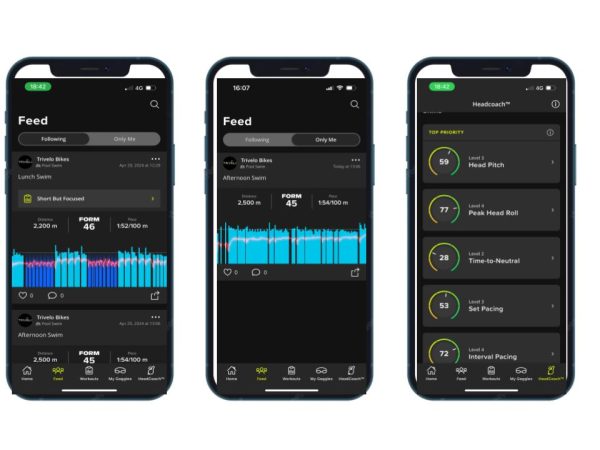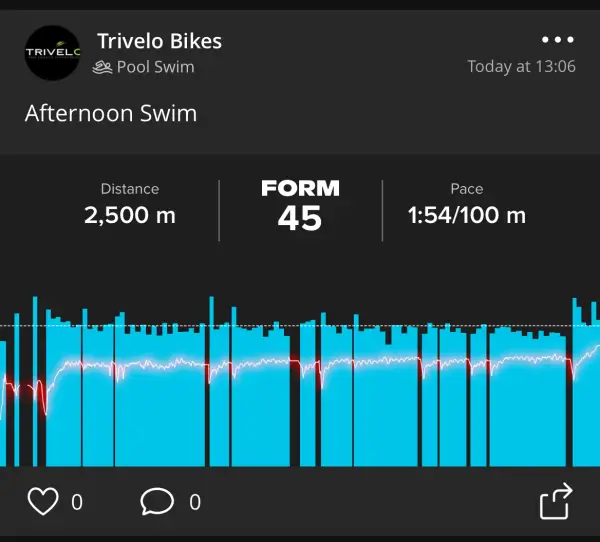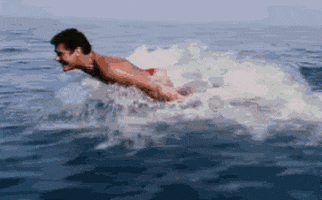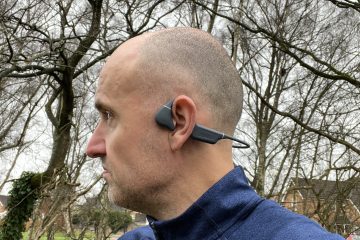I recently reviewed the FORM Smart swim 2 goggles. With the latest smart goggles from FORM they have introduced the HeadCoach feature that includes the FORM score. I interviewed the team at FORM to get the lowdown on this swim metric. Everything I uncovered on this is here. Get a better FORM score and unleash your inner Dolphin.
Huge thanks to FORM for their support in developing this.

What the fork is the FORM Swim Score?
FORM swim Score is a metric that scores your swim from 0-100. It measures swimming efficiency rather than just speed like a CSS score. The idea behind it is to take into account all aspects of a swimmer’s length into account. If you haven’t starting searching for GIFs of cats wearing fancy dress then you really love your swim metrics. Fab! Me too.

FORM Score is uses the following key metrics:
- Swimmer’s “distance per stroke” (the number of metres they travel per stroke)
- Swimming velocity (metres per second)
FORM use these inputs to score a swimmer’s efficiency. According to FORM this makes the score a truer measure of your swimming efficiency. It is part of their HeadCoach feature to help a swimmer improve their technique.
When I set up my FORM app account while doing the review of the Smart 2 goggles, I input my height. This is then used to understand pace and push off from the wall. It all combines to calculate the FORM Score calculation.

How on earth do I get a good FORM Score?
From my swimming wearing the goggles I really struggled to get above a score of 50. Being honest, I found this a bit demoralising. I’m normally a Fast lane swimmer in a pool and above average triathlete swimmer. I’m no match for hardcore swimmers.
According to the marketing team at FORM score above 60 is a good FORM score. As you progress above this you get into professional level swimming scores. A professional triathlete should be score 70+. So, I felt a bit better about my scores! As an amateur swimmer who swims regularly their response was I should be able to achieve a score of 60 from following the coaching.

FORM score versus SWOLF
Both FORM Score and SWOLF use a swimmer’s speed and their stroke length to measure swimming efficiency.
SWOLF does this by adding the number of strokes and the number of seconds a swimmer takes in a length to give you a number. However, the number of strokes you take per length can change significantly based on:
- The swimmer’s pace
- The swimmer’s height
- How far a swimmer pushes off the wall
- The pool size they are swimming in.
As such, it is hard to compare between people, and across different pool sizes.
FORM Score measures swimming efficiency while taking all aspects of a swimmer’s length into account. FORM Score is more specific because it uses the swimmer’s “distance per stroke” (the number of metres they travel per stroke) and their swimming velocity (metres per second) to measure a swimmer’s efficiency. This makes FORM Score a truer measure of your swimming efficiency, and a better tool to help a swimmer improve their technique.
When you set up your FORM app account, you input your height. This, plus your pace and push off from the wall, are used for the FORM Score calculation.

Tips from the creator on how to improve your FORM swim score
I had a chance to catch up with Will Parry and Brian Johns from the FORM team. Will Parry is the Director of Media Relations and Brian Johns is the Head of Coaching Science at FORM.

Brian Johns was a competitive swimmer, 3 times Olympian and former world record holder. After swimming, Brian coached the Canadian National and Junior National teams for 10 years. He is now the man behind the coaching element of the FORM Smart Swim 2 goggles.
Brian gave me the following advice to improve my FORM Score, there are three key areas you to can work on.
- Improving pace – Being able to increase your stroke rate over a given distance and being able to hold that over the distance.
- Improving technique – By improving your DPS through technical cues, such as ‘finish past your hips’, ‘roll and reach on entry’, and ‘relaxed recoveries’.
- Improving pacing (fitness) – Example: If you’re swimming 200s and your FORM Score is going down towards the end of each interval, shorten your interval distance (in this case to 150), then work back up to 200, to improve your score.
One addition I would give is focus on your core strength outside the pool. From lockdown I found I focused on core and was able to return to the pool still strong in the water. Check out my favourite core exercises for a short core workout you can fit into every day.



0 Comments